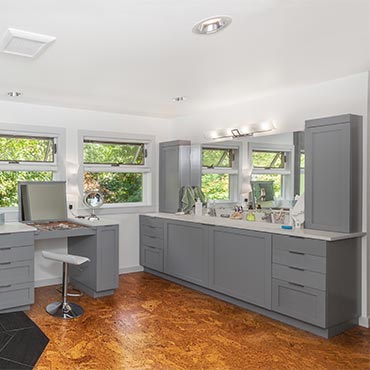Wood Flooring: Cork Tile Flooring

Cork Tile Flooring: A Blend of Sustainability and Style in Modern Interior Design
In the ever-evolving world of interior design, the quest for materials that combine aesthetics, functionality, and sustainability has brought cork tile flooring into the limelight. This natural, renewable material offers a unique blend of comfort, versatility, and eco-friendliness, making it a preferred choice among interior designers, decorators, and design consultants. This article delves into the significance of cork tile flooring in modern interiors, discussing its types, durability, and how it enhances spaces, with insights for professionals in selecting the ideal type for various projects.
Types of Cork Tile Flooring
Cork flooring comes in two primary forms: cork tiles and floating cork planks. Cork tiles, typically glued down, offer a traditional look and are ideal for custom designs and patterns. Floating cork planks, on the other hand, click together like laminate flooring, making them a convenient choice for quick renovations. Both types are available in a range of colors and patterns, from natural cork hues to bold and digitally printed designs, offering immense creative flexibility.
Versatility in Design
One of the most significant advantages of cork flooring is its versatility. It can seamlessly fit into various design aesthetics - from rustic to contemporary. Cork's natural texture adds warmth and character to spaces, while its ability to be dyed or printed upon allows it to mimic other materials like hardwood, stone, or even abstract patterns. This adaptability makes cork tile flooring an excellent choice for interior designers looking to tailor flooring to a specific theme or style.
Durability and Comfort
Cork is remarkably durable, capable of withstanding heavy foot traffic while being naturally resistant to mold, mildew, and pests. Its unique cellular structure makes it a natural insulator, providing warmth and reducing sound transmission – a desirable feature in both residential and commercial settings. Additionally, cork’s cushioned surface offers a comfortable underfoot experience, a boon in spaces where people stand for extended periods.
Sustainability: A Core Feature
In today's environmentally conscious world, cork stands out for its sustainability. Harvested from the bark of cork oak trees without harming the tree, cork is a renewable resource. This aspect significantly enhances the appeal of cork tile flooring among eco-conscious clients and projects aiming for green building certifications.
Enhancing Interior Spaces
Cork flooring adds an organic, warm element to interiors. Its natural patterns and textures bring a sense of calm and connection to nature, aligning well with biophilic design trends. Moreover, cork's acoustic properties make it ideal for creating serene environments, essential in settings like spas, libraries, and open-plan offices.
Tips for Selecting Cork Tile Flooring
For interior designers and decorators, selecting the right cork flooring involves considering several factors:
- Project Needs: Assess the traffic and usage of the space. High-traffic areas may require denser cork tiles.
- Aesthetic Goals: Choose colors and patterns that complement the overall design theme. Utilize the variety available in cork to create unique, eye-catching floors.
- Finish and Maintenance: Opt for pre-finished cork tiles in commercial spaces for easier maintenance. In residential settings, unfinished tiles can be customized with stains and finishes.
- Sustainability Credentials: For eco-friendly projects, look for cork flooring with certifications like the Forest Stewardship Council (FSC) or GREENGUARD.
Recent Trends and Innovations
The cork flooring industry has seen several recent trends and innovations:
- Digital Printing: Advanced digital printing technologies have enabled the creation of cork tiles in a wide array of designs, from realistic wood and stone finishes to artistic patterns.
- Hybrid Materials: Combining cork with other materials like recycled rubber has led to the development of innovative flooring solutions, offering enhanced durability and unique textures.
- Color Trends: While natural cork hues remain popular, there's an emerging trend of bold and pastel colors, aligning with contemporary interior palettes.
- Eco-Friendly Finishes: The use of low-VOC and natural oil finishes has increased, enhancing the sustainability quotient of cork flooring.
Conclusion
Cork tile flooring is more than just a flooring option; it's a statement of style, comfort, and environmental responsibility. Its versatility, durability, and sustainability make it an excellent choice for a wide range of interior design projects. As the industry continues to innovate, the possibilities with cork flooring expand, providing interior designers, decorators, and consultants with an ever-growing palette to create distinctive and sustainable interiors. By embracing cork tile flooring, professionals can deliver not just aesthetically pleasing spaces but also contribute to a healthier, more sustainable world.















